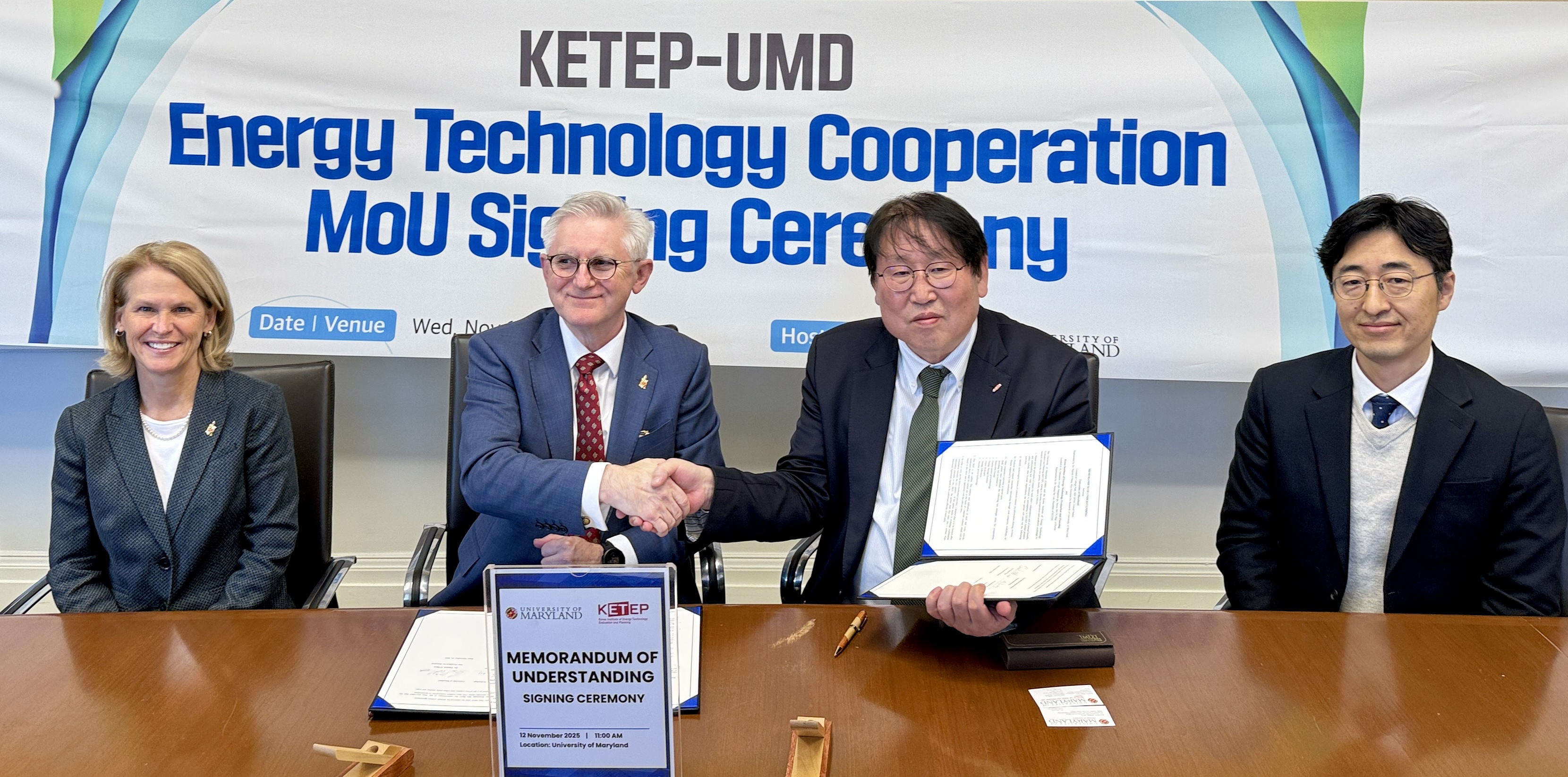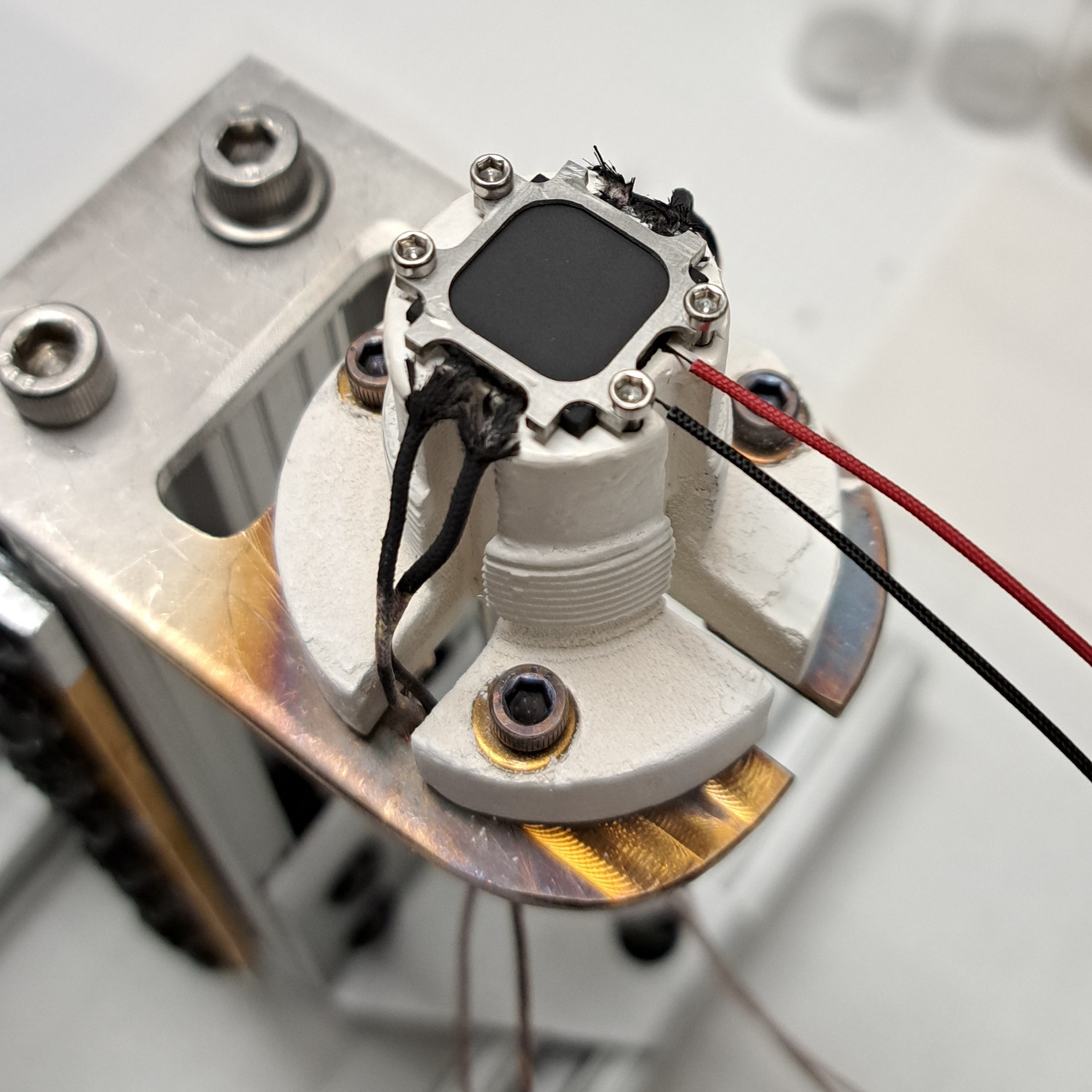News Story
CEEE Team Innovates Efficient HVAC&R Compressor Technology

During a recent lab tour, researcher Cheng-Yi Lee demonstrates an updated prototype of a near-isothermal compressor using a liquid piston.
A research team from the Center for Environmental Energy Engineering presents a novel way to improve compressor efficiency and lower energy consumption in cooling and refrigeration systems, in the February 15, 2025, issue of Applied Thermal Engineering. The team innovated the first near-isothermal compressor using a liquid piston, which could potentially lower energy consumption up to 30% compared to today’s technologies.
“The compressor is one of the most energy-intensive parts of an air conditioner or a heat pump,” explains postdoctoral researcher Cheng-Yi Lee, the paper’s lead author. It typically compresses gas rapidly, causing the gas temperature to rise and decreasing the system’s efficiency. As an alternative, the CEEE team developed a near-isothermal compressor that keeps the gas close to a constant temperature.
The innovation uses a liquid piston compressor integrated with a gas cooler for the transcritical carbon dioxide (CO2) refrigeration cycle. “By compressing CO2 inside a gas cooler with a large heat transfer area, we slow down the compression process, giving us sufficient time to discharge heat and keep the temperature at a controlled level,” Lee explains. The team utilized microchannel heat exchangers as compression chambers, each with a tiny internal diameter – about 1 mm – to help increase the heat transfer area and boost isothermal efficiency. The prototype reduced the compression temperature increase from 95 K to 10 K, achieving 90% isothermal efficiency, while delivering 1 ton of cooling capacity.
The paper’s co-authors are Faculty Assistant Haopeng Liu; former CEEE researcher Lei Gao ’22, now of the Oak Ridge National Laboratory R&D staff; Senior Faculty Specialist Jan Muehlbauer; CEEE Co-Director Yunho Hwang and CEEE Director Reinhard Radermacher. The research was completed with support from the U.S. Department of Energy's Office of Energy Efficiency and Renewable Energy.
The innovation is still in its early phases but could eventually offer a solution for more efficient transcritical CO2 cooling and refrigeration. “The challenge right now is that we want to switch to refrigerants with low global warming potential (GWP),” says Lee. As an ultra-low-GWP option, CO2 transcritical refrigeration is being adopted by some supermarkets and food warehouses. But CO2 suffers from lower efficiency than other alternatives, which has suppressed its widespread adoption. “If we can improve the efficiency of CO2 cooling,” says Lee, “it will become a much more attractive eco-friendly option.”
Download the paper: “Development of a Near-Isothermal Transcritical CO2 Compression System With a Liquid Piston Compressor.”
Published December 9, 2024









